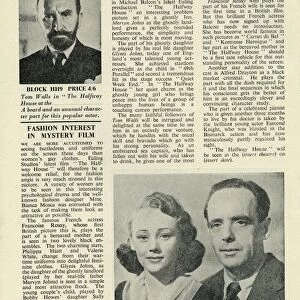Labiatae. Plate 112 from The Chief Natural Orders of Plants (1849)
![]()

Wall Art and Photo Gifts from Mary Evans Picture Library
Labiatae. Plate 112 from The Chief Natural Orders of Plants (1849)
Plate 112 from The Chief Natural Orders of Plants (1849). Illustrated and described by Elizabeth Twining (1805-1889)
Mary Evans Picture Library makes available wonderful images created for people to enjoy over the centuries
Media ID 8621327
© Mary Evans Picture Library 2015 - https://copyrighthub.org/s0/hub1/creation/maryevans/MaryEvansPictureID/10708171
1805 1889 Asterid Elizabeth Twining Eudicot Labiatae Lamiaceae Lamiales Purple Twining Angiospermae Dicot Dicotyledon Magnoliophyta
EDITORS COMMENTS
Plate 112 from The Chief Natural Orders of Plants, illustrating the Labiatae order, presents a stunning Victorian-era drawing of a pink Labiatae flower. This beautiful illustration, created by Elizabeth Twining in the 19th century, showcases the intricate details of this flowering plant, which is also known as the Lamiaceae or Dead-nettle family. The Labiatae order is part of the larger Angiosperm class, which includes flowering plants with seeds enclosed in an ovary. As a dicot, this plant belongs to the Eudicot clade, characterized by two seed leaves. The illustration reveals the distinctive labiate, or two-lipped, structure of the flower, which is a hallmark of the Labiatae order. The upper lip, or labrum, is larger and forms a flat platform, while the lower lip, or labella, is smaller and often lobed. The pink hue of the flower adds to its allure, with shades ranging from soft blush to deep, rich reds and purples. Elizabeth Twining, a skilled botanical artist, expertly captured the delicate details of this flower, from the veining on the petals to the intricate patterns on the calyx and corolla. Her meticulous work showcases the beauty and complexity of the natural world during the Victorian era. This illustration is a valuable historical record of the Labiatae order, providing a glimpse into the botanical research and artistic techniques of the 19th century. It serves as a reminder of the importance of documenting and appreciating the natural world, both for scientific discovery and aesthetic enjoyment.
MADE IN THE UK
Safe Shipping with 30 Day Money Back Guarantee
FREE PERSONALISATION*
We are proud to offer a range of customisation features including Personalised Captions, Color Filters and Picture Zoom Tools
SECURE PAYMENTS
We happily accept a wide range of payment options so you can pay for the things you need in the way that is most convenient for you
* Options may vary by product and licensing agreement. Zoomed Pictures can be adjusted in the Basket.










